I have a data frame which contains x-axis numeric bins and continuous y-axis data across multiple categories. Initially, I created a boxplot by making the x-axis bins "factors", and doing a boxplot of the melted data. Reproducible data:
x <- seq(1,10,by=1)
y1 <- rnorm(10, mean=3)
y2 <- rnorm(10, mean=10)
y3<- rnorm(10, mean=1)
y4<- rnorm(10, mean=8)
y5<- rnorm(10, mean=12)
df <- data.frame(x,y1,y2,y3,y4,y5)
df.m <- melt(df, id="x")
My code to create the x-axis data as a factor:
df.m$x <- as.factor(df.m$x)
My ggplot:
ggplot(df.m, aes(x=x, y=value))+
geom_boxplot(notch=FALSE, outlier.shape=NA, fill="red", alpha=0.1)+
theme(axis.text.x = element_text(angle = 90, vjust = 0.5, hjust=1))
The resulting plot:
 :
:
The problem is that I cannot use x-axis numeric spacing because the x-axis is categorized as a factor, which has equal spacing. I want to be able to use something like scale_x_continuous to manipulate the axis breaks and spacing to, say, an interval of 2, rather than a boxplot every 1, but when I try to plot the data with the x-axis "as.numeric", I just get one boxplot of all of the data:

Any suggestions for a way to get this continuous-looking boxplot curve (the first image) while still being able to control the numeric properties of the x-axis? Thanks!
